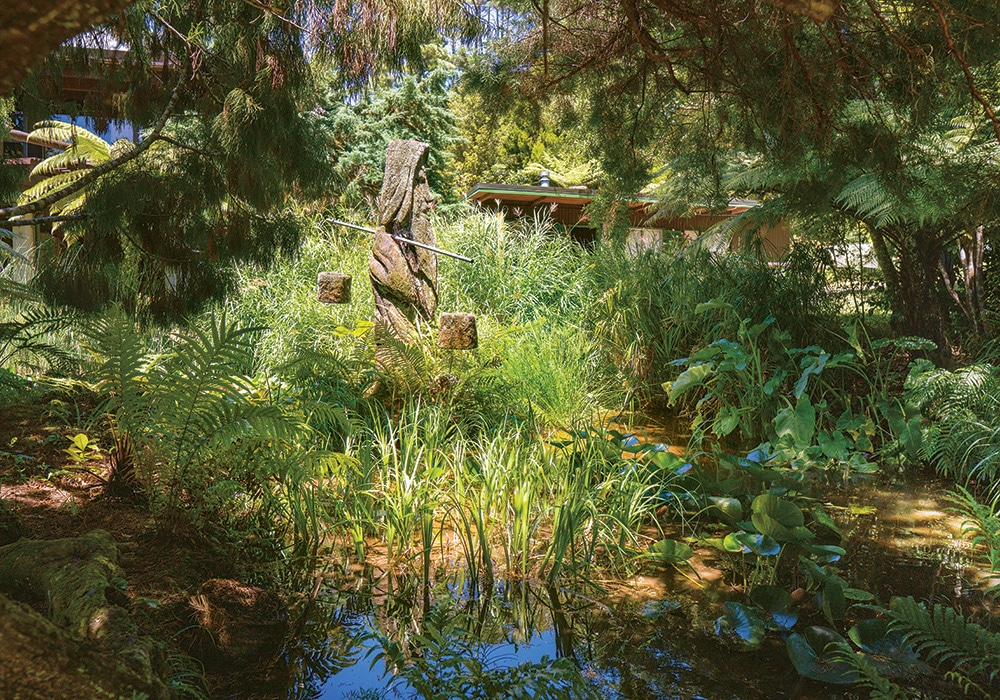Paul Owen takes a forgotten journey through the Coromandel.
These days, little traffic plies Tapu Coroglen Road, a 26km-long stretch of meandering gravel that climbs to 600 metres and dissects the rugged Coromandel peninsula with one of its highest passes. During a six-hour there-and-back-again from the west side of the peninsula to the east by bicycle (with several dalliances), I saw just four other vehicles. There are few regularly maintained roads in New Zealand with such low volumes of traffic. Few too, that deliver such a rich combination of scenery, nature, history, and culture as this ghost road of former gold and gum rushes does.
As an occasional cycle tourist, such low traffic volumes are much appreciated, particularly as each vehicle that passes generally leaves a long trail of choking dust during the drier months. Then there’s the serenity. The hills lining the road are clad with native forest that has had 100 years or more to regenerate. There’re even a few roadside specimens of Agathis australis (kauri) that survived the great Coromandel kauri tree slaughter by the Royal Navy in the 1820s and 1830s, and are large and old enough to rival the famous ancient giants of Northland. It’s the combination of sunlight filtering through kauri leaves, melodic birdsong, and the rhythmic huffing and puffing of the wings of well-fed kererū that makes Tapu Coroglen Road such a compelling place to ride a bicycle.
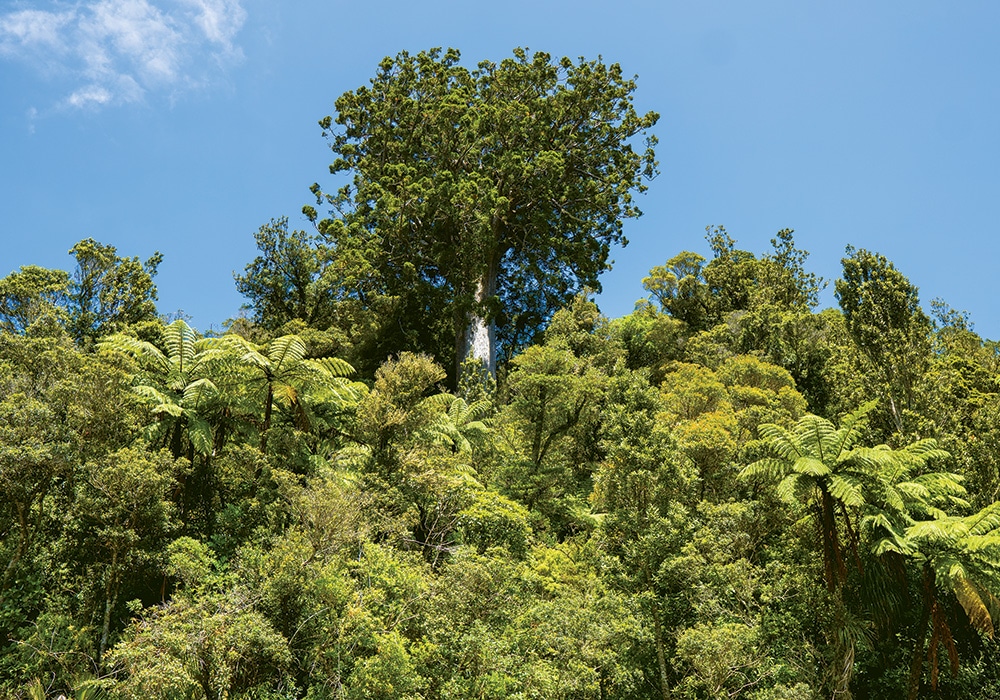

Golden history
It wasn’t always a ghost road. After the loggers cleared the most easily felled kauri in the two river valleys that the road links during the first half of the 19th century, the great Thames gold rush of the 1860s kicked off. The town 30km to the south of Tapu soon outgrew the size of Auckland, as Thames was seen as the next place to strike it lucky after similar rushes in Australia and the USA began to wane.
The prospectors soon turned their attention to Tapu Creek (known as Waipatukahu Creek to Māori), 30km to the north of the town, near Diehard Stream and to the southwest of Tapu River. When higher quality alluvial gold with a lower silver content was first panned from the creek in 1868, it triggered quite a human stampede northward. In the week following the appearance of a miner in Thames with 30 ounces of high-quality gold won from Tapu Creek, a tent city of more than 1000 miners was erected on the alluvial flats where Tapu township now stands.
That the place that triggered this local rush was called Tapu didn’t appear to put any of these gold-obsessed miners off. Less than 30 years before, a great battle of the Musket Wars fought near the mouth of the creek, had resulted in the burial of hundreds of slain warriors there. Some of the fallen were chiefs, and possibly those who are sensitive to such sensations can still feel their mana residing there.
These days, the northern side of the creek mouth is a cemetery and a reserve, the latter popular with boaties seeking to launch and recover their craft. The fenced-off urupa nearby contains a few historic headstones, some bearing the name of the McIsaac family, who staked the first claims here during the gold rush. That they share their final resting places with various high-born Ngāpuhi and Ngāti Tamaterā luminaries gives me something philosophical to ponder as I uncouple the bike from the back of my parked campervan and head due east, down the start of Tapu Coroglen Road. Death, it appears, makes equals of us all, no matter what our status, race, poverty or riches.


Road of hidden treasures
The road begins with a gentle climb into the hills, and is just wide enough for oncoming vehicles to squeeze past each other, although there are a few one-way sections. Its surface is smooth tarseal as it climbs past the river, up a valley that’s now relatively peaceful compared to the 1870s, when the din of the many batteries stamping quartz rocks here used to echo around the surrounding hills.
About 3km inland, you’ll find the picturesque Tapu Creek Campervan Park. The facilities may be rustic, and there’s an honesty box to pay your camping fees into, but oh, what a setting. There are some nice relaxing waterholes less than a stone’s throw from your chosen camping site, and the water temperature of the creek is more than tolerable.
The tar ends another couple of kilometres further up the road from the campervan park, the transition to a gravel surface also marked by a steepening of the road’s gradient, and a shift in surroundings from rural lifestyle properties to native forest. But don’t be too keen to charge on into the oncoming challenge of climbing to the top of the road; there’s a real horticultural and epicurean treasure to be found after entering the last kānuka-fringed driveway on the right before the tarseal runs out. It’s Rapaura Watergardens and the attendant café that I’d happily put forward as the finest place to eat lunch on the Coromandel.
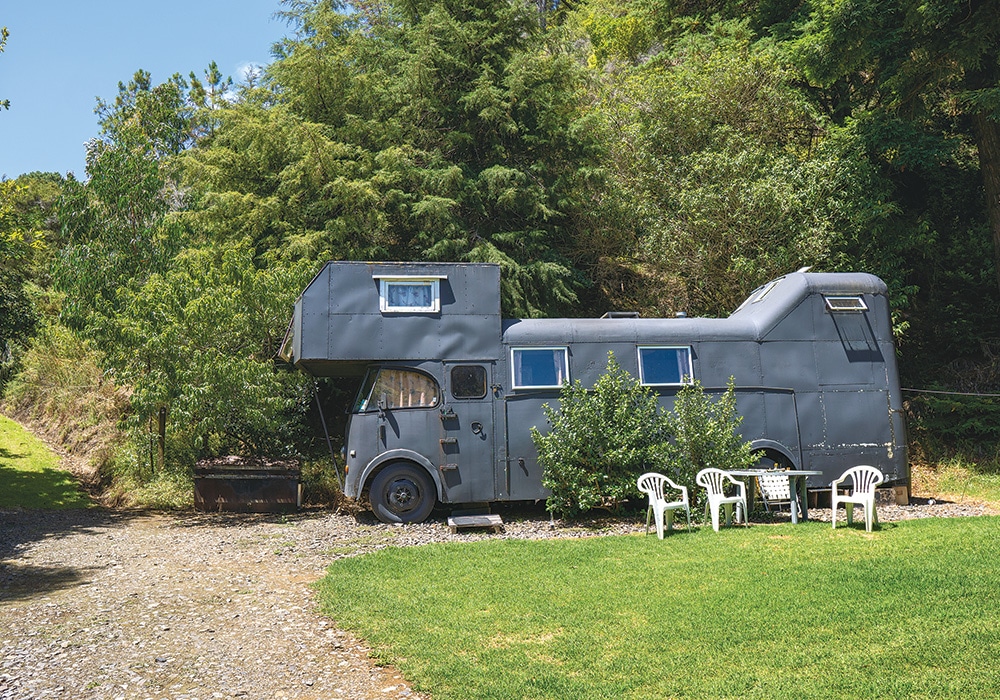
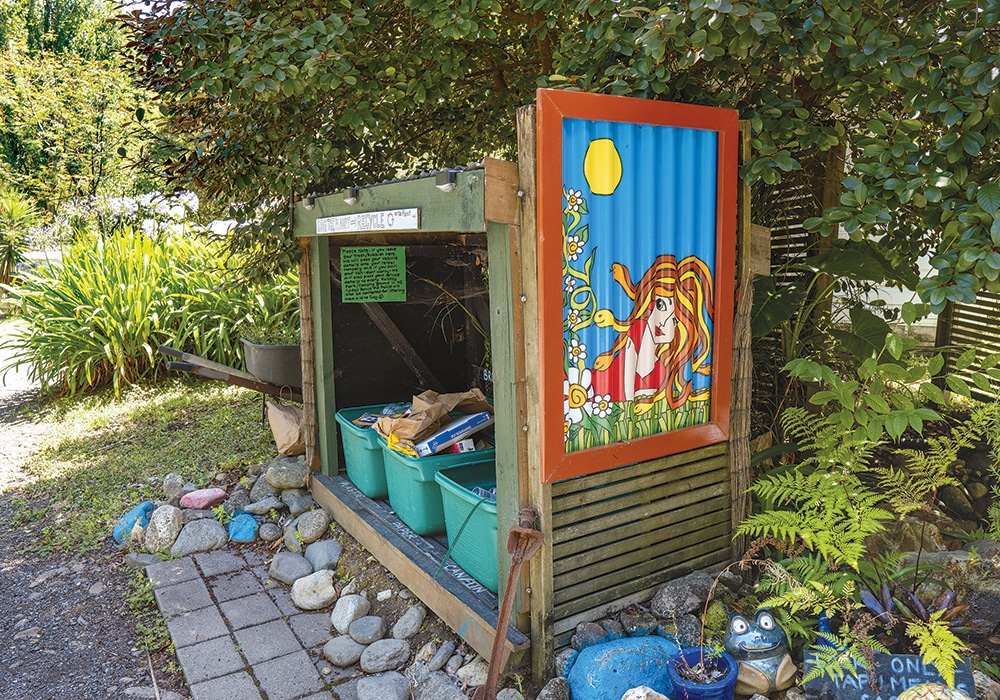
The water gardens, a tasteful mix of begonias, hydrangeas, orchids, azaleas, water lilies and rhododendrons cohabiting with native ferns, rimus, kānuka, and rātā, were established by Fritz and Josephine Loennig when they bought 64 acres of regenerating bush and grazing land in the early 1960s. Notable features include the seven-tiered natural waterfall, the many art forms, and the abundance of birdlife attracted to the property. There’s a mind-calming harmony to the way it all comes together. Present owner, Sally Sank, is obviously dedicated to upholding the belief of the Leonnigs that ‘the best garden is a well-tended wilderness’.
And gardening judges agree: Rapaura has been named a ‘garden of distinction’ by the Canterbury Horticultural Society and a ‘garden of significance’ by the New Zealand Garden Trust. Tripadvisor has also made it their top attraction in the Thames region. Choose the best season to view your preferred blooms. You’ll find irises and bog plant flowers, along with azaleas and rhodos in the spring, while my personal favourite of water gardens, the lotus, flowers from November to April, along with other water lilies.
The darker ambience of the café is the perfect place to recuperate from the visual onslaught of the dramatic colour of the gardens; however it is temporarily closed at the time of writing this. Chef Sacha Dane explains: “With the vast majority of our visitors being overseas tourists, it just isn’t viable to keep it open at present. We hope to open up again in early 2023.”
However, it was open when I popped in during my bike ride, so I ordered the $19 bruschetta and salad for lunch. The latter came spicily flavoured by Sacha’s own freshly-made five spice vinaigrette, a concoction so good that diners often buy a bottle to take with them when leaving the café. His style is Asian/European fusion, as you’d expect for someone who spent his formative years in Hong Kong before training as a chef in Switzerland.

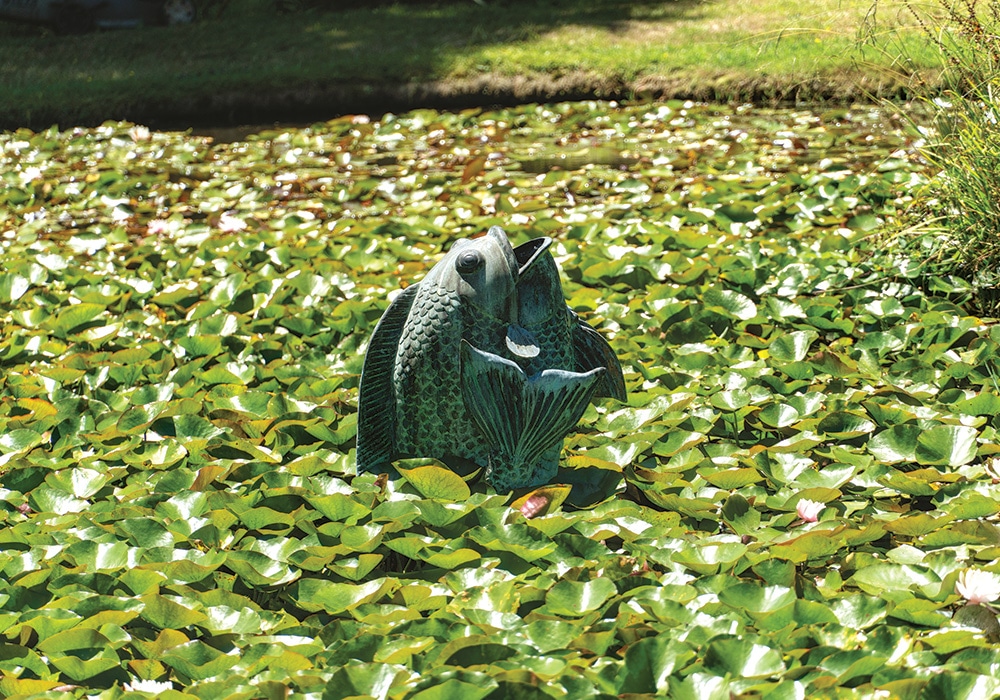
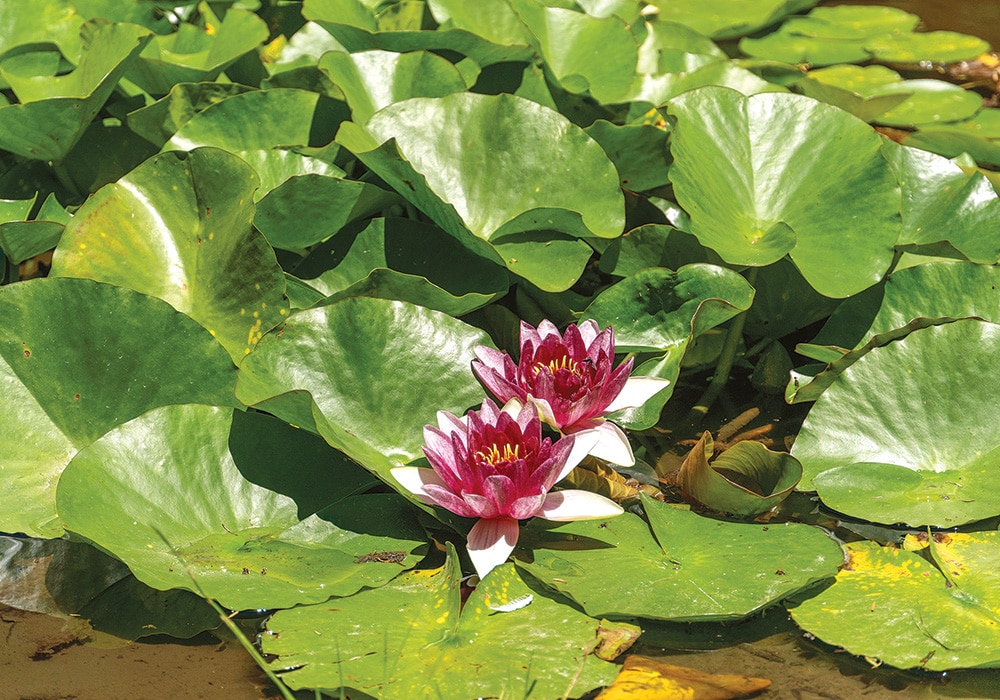
The square kauri tree
I could still taste that spicy vinaigrette as I hopped back onto my bike and began the hard mahi of pedalling to the top of the Coromandel ranges. Soon, I was in no state to visit a classy café as there were rivulets of sweat running down my face. Then, just when I needed a break, the path to a ‘Square Kauri Tree’ appeared.
This freak of nature overlooks the road from a knoll located about 200 steps above it. What caused this kauri to grow a square trunk? The only plausible explanation that I can think of was that it was hemmed in on four sides by other large kauri trees that were then logged. Perhaps the loggers thought this unique tree deserved to be preserved for posterity; maybe it was deemed too dangerous to fell and then transport. The logging methods used back in those days relied heavily on gravity to shift the logs out of the bush. The creek below would usually be dammed to create a large reservoir into which cut logs could be rolled. When the reservoir was full of logs, the dam would be blown apart by dynamite, creating a forceful surge of water to deliver the logs downstream to a waiting ship anchored at the coast. Maybe a square tree trunk was considered too unpredictable to roll down the hill.
Back on my bike, as I valiantly neared the top of said hill, a battered Toyota Hiace van stopped alongside me, and the driver offered me and the bike a lift to Coroglen. It’s a kindness that’s hard to refuse because it’s clear that he sees the bike ride as a hardship that he can relieve me from. (He has obviously been fooled by the ability of my electrified Specialized Creo SL to disguise itself as an ordinary pushbike.)
It takes about three minutes to convince him that I’m honestly enjoying myself, and that completing the ride is something of a personal challenge. So he then offers to buy me a beer in lieu of a lift if he’s still at the Coroglen pub when I get there. This increases my sense of challenge, for who can refuse a free beer after a 26km traverse by bicycle of such rugged and beautiful country as this? Time to pedal faster, old dude.
The summit is soon surpassed, and the long glide down to Coroglen begins. The road is a bit rougher on this side, but there’s about 20mm of suspension travel in the sidewalls of my gravel-oriented tyres and a further 200mm in my legs available when I stand on the pedals. It’s such a rush to descend at speed on a serpentine, irregularly surfaced road such as this. An oncoming bumblebee bounces off my teeth, and I force myself to stop smiling so much.
I take a quick pause to photograph the largest kauri adjacent to the road, this time with a properly round trunk. Riverglen Holiday Park and the little roadside waterfall beyond it only receive cursory glances, for a cold beer awaits as I approach the building that replaced the characterful old pub that was built back in 1876. In those days, Coroglen was called Gumtown as many of Tapu’s miners moved over there to dig for the amber kauri resin after the gold ran out. Then the gum ran out and they renamed the town in the 1920s after some successful racehorse. Luck was obviously a powerful force in their lives.
Inside the pub, Mike, my new chum, hands me a long cool glass of amber liquid that washes the dust from my throat. However, there’s no time for another as there’s the ride back over the best gravel road that I’ve ever encountered to the campervan still to come. The hardest part of that is going to be trying to convince Mike that I really am about to have fun.
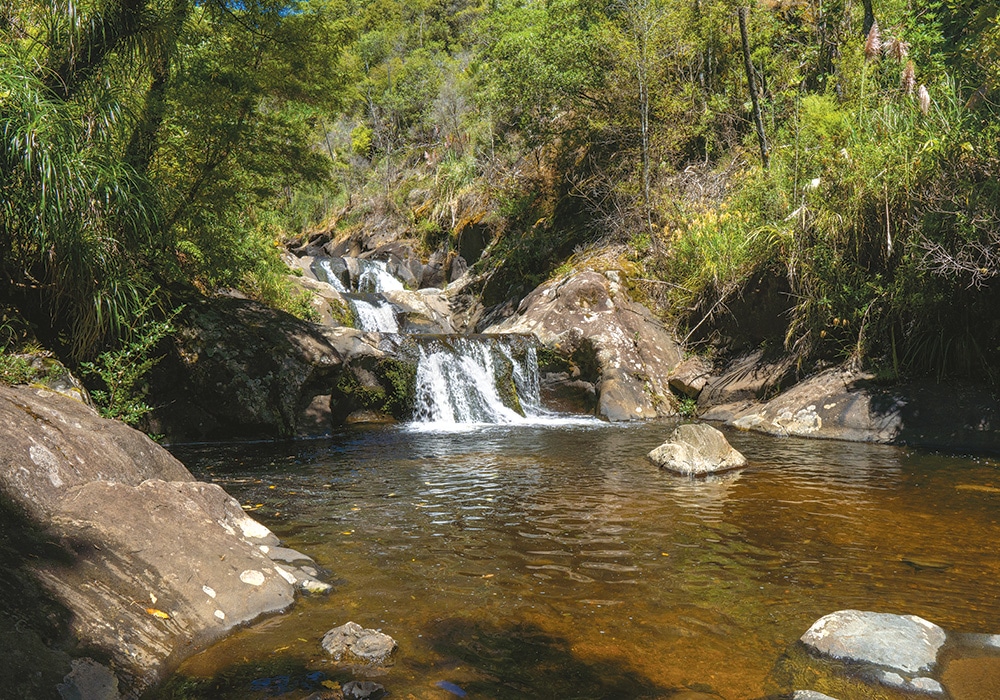
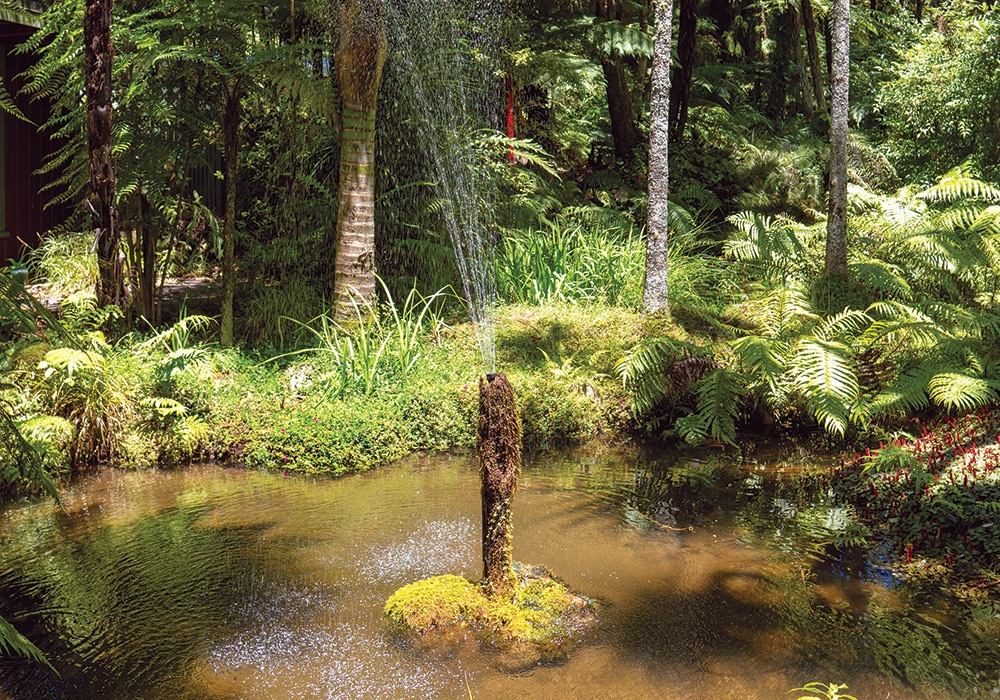
More information:
- Tapu Creek Campervan Park is a lovely camping ground in the Tapu Valley, with powered and non-powered sites available. Visit facebook.com/tapucreekcampervanpark for more details.
- Rapaura Watergardens are open from 9am-5pm, seven days a week. Entrance is $15.00 for adults and $6.00 for children up to 15 ($10.00 for adults and $3.00 for children between May and September). The Koru Café is temporarily closed until early 2023. Visit rapaura.com for more.
- Riverglen Holiday Park & Campground is situated on the banks of the Waiwawa river with one of the best swimming holes in the area. Visit riverglencoromandel.co.nz for more.
Looking for motorhomes or caravans for sale in NZ? Browse our latest listings here.

